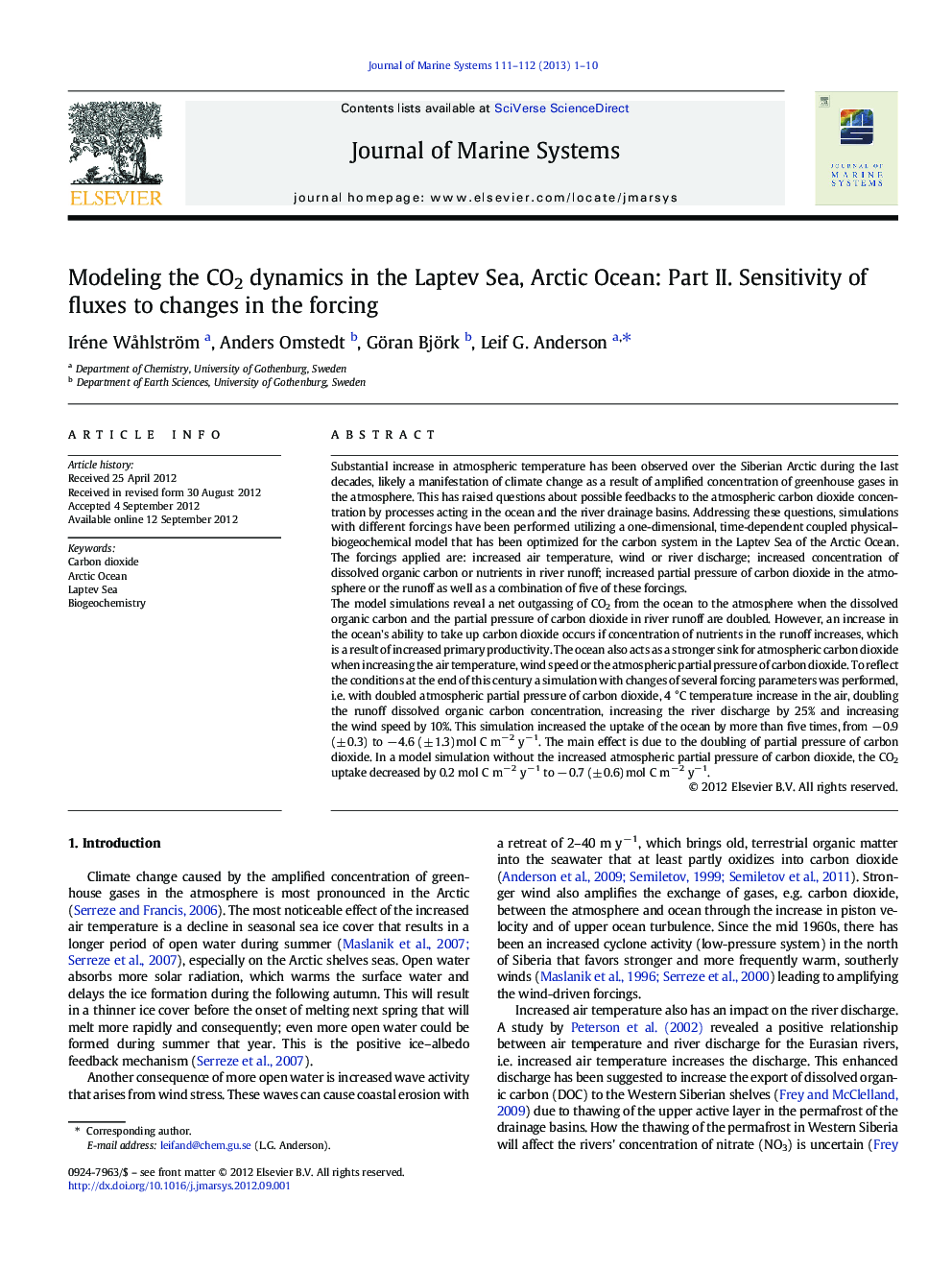| کد مقاله | کد نشریه | سال انتشار | مقاله انگلیسی | نسخه تمام متن |
|---|---|---|---|---|
| 4548166 | 1627311 | 2013 | 10 صفحه PDF | دانلود رایگان |

Substantial increase in atmospheric temperature has been observed over the Siberian Arctic during the last decades, likely a manifestation of climate change as a result of amplified concentration of greenhouse gases in the atmosphere. This has raised questions about possible feedbacks to the atmospheric carbon dioxide concentration by processes acting in the ocean and the river drainage basins. Addressing these questions, simulations with different forcings have been performed utilizing a one-dimensional, time‐dependent coupled physical–biogeochemical model that has been optimized for the carbon system in the Laptev Sea of the Arctic Ocean. The forcings applied are: increased air temperature, wind or river discharge; increased concentration of dissolved organic carbon or nutrients in river runoff; increased partial pressure of carbon dioxide in the atmosphere or the runoff as well as a combination of five of these forcings.The model simulations reveal a net outgassing of CO2 from the ocean to the atmosphere when the dissolved organic carbon and the partial pressure of carbon dioxide in river runoff are doubled. However, an increase in the ocean's ability to take up carbon dioxide occurs if concentration of nutrients in the runoff increases, which is a result of increased primary productivity. The ocean also acts as a stronger sink for atmospheric carbon dioxide when increasing the air temperature, wind speed or the atmospheric partial pressure of carbon dioxide. To reflect the conditions at the end of this century a simulation with changes of several forcing parameters was performed, i.e. with doubled atmospheric partial pressure of carbon dioxide, 4 °C temperature increase in the air, doubling the runoff dissolved organic carbon concentration, increasing the river discharge by 25% and increasing the wind speed by 10%. This simulation increased the uptake of the ocean by more than five times, from − 0.9 (± 0.3) to − 4.6 (± 1.3) mol C m− 2 y− 1. The main effect is due to the doubling of partial pressure of carbon dioxide. In a model simulation without the increased atmospheric partial pressure of carbon dioxide, the CO2 uptake decreased by 0.2 mol C m− 2 y− 1 to − 0.7 (± 0.6) mol C m− 2 y− 1.
► The 1-D coupled model illustrates the Laptev Sea C-cycle under variable forcing.
► The ocean acts as a stronger CO2 sink when increasing air temperature & wind speed.
► The ocean outgases CO2 when DOC & pCO2 in river runoff are duplicated.
► Increase in runoff nutrients result in amplified primary productivity.
Journal: Journal of Marine Systems - Volumes 111–112, February 2013, Pages 1–10